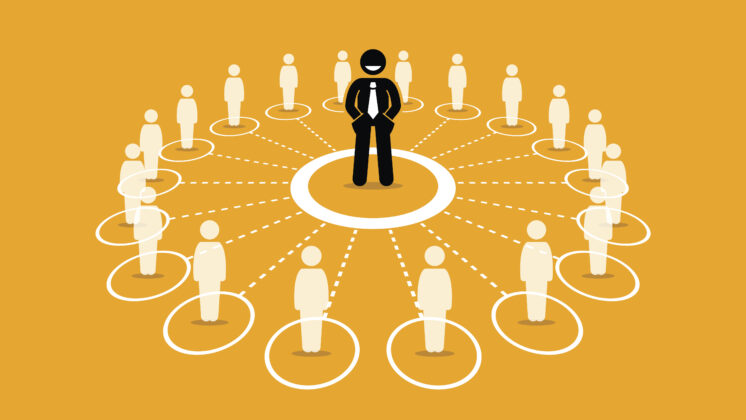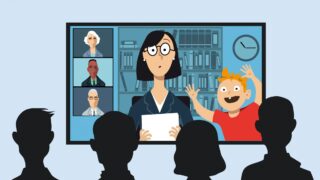Right up until 2020, if you asked successful CEOs whether their teams operated better in person or remotely, a big majority would’ve voted for in-office work. It seemed like an obvious answer: How do you create human connections if your humans are distributed across multiple time zones, struggling with internet connectivity, and distracted by kids, pets, or breathtaking vistas?
Phil Libin, a serial entrepreneur whose credits include founding Evernote and the startup studio All Turtles, was once a staunch supporter of meeting in person. Like many others, he had a long list of seemingly obvious reasons why meeting in person is important. But at TechCrunch Disrupt 2021, he disclosed that the pandemic taught him something important:
“I was wrong before.”
Like many CEOs, Libin found that his personal experience had been getting in the way of embracing a distributed workforce. After all, he could afford housing with an easy commute and, as the boss, he enjoyed strolling around the office peeking in on what people were doing. Then came COVID-19 and, with it, a revelation that a distributed workforce is the future.
But what is a “distributed workforce”? Is it just remote work?
Not exactly. And understanding the distinction could make all the difference to the future of your company and its culture.
What is a distributed workforce?
On the surface, claiming that your workforce is “distributed” sounds like just another way of saying your organization allows remote, hybrid, or blended work. And physically, yes, there are similarities: distributed workers, like remote workers, are primarily not in the office.
But there’s a huge distinction in two areas: mindset and scale.
Remote Work
Remote work is work that is remote from somewhere—an office or headquarters remains the default center of activity.
Bosses who embrace remote work worry mostly about how individual workers function. Are they building healthy working relationships despite distance from coworkers? How do they manage their time and prioritize tasks without a manager sitting nearby?
With remote work, people can work from home (or a café or a beach or wherever), but they are the ones who are remotely located, out there on their own. The company is still, overall, working under the traditional mindset that there is an office as the base of operations.
In simple terms, remote work is irregular work.
Distributed Work
Distributed work takes things further. It isn’t about individual work habits—it’s a pillar of the company culture.
A distributed workforce operates on a foundation of in-person meetings being irregular, assuming they happen at all. There are no questions about how individuals will function away from the office because everyone is away from the office. Leadership has put necessary structures in place to support people providing value from their homes (or the library or a mountaintop or . . . you get the picture).
In other words, remote work is “everyone in the office vs. that remote guy.” The distributed workforce removes the “vs.” and relies on a different social contract between employee and employer.
Next Article
3 Principles for the New Age of Work-Life Integration
3 NON-Pandemic Reasons Your Team Wants to Stay Remote
What are the benefits of a distributed workforce?
Libin’s latest startup, mmhmm, began as a joke—something to take the edge off of pandemic nerves for the All Turtles team. The app injects fun into video meetings and presentations via animations, fades, filters, and other elements. But then something funny happened: the product that started as an in-house joke became a workable business model.
In parallel with that, Libin’s team had a eureka moment about distributed work.
“[When] we made video more fun, it actually became kind of a superior way of communicating,” says Libin. “And that was true of a lot of things in the distributed world. When we stopped thinking about being distributed as a short-term way to survive the pandemic and a poor substitute for being in person . . . we transitioned into [doubling down] on the advantages.”
So what are those advantages? Some are now pretty familiar since the world went remote:
- Working hour flexibility
- No soul-crushing commutes
- Opportunities for better work-life balance
- The ability to live and work from anywhere
- More comfortable settings, particularly for diverse needs
A distributed workforce, however, goes further thanks to a unique social contract and integration with company culture:
- A flatter hierarchy, thanks to everyone working from anywhere, including the CEO
“Obviously,” says Libin, “there are disadvantages to working in a distributed way. Of course there are. [But] how about we focus on the amazing superpower advantages?”
Plenty of people are now looking for those advantages. The best jobs for work-life balance going forward will be the ones embracing the new normal and new opportunities.

Phil Libin’s Pyramid Test for Distributed Work Facetime
A distributed workforce doesn’t strictly prohibit meeting in person. Remember, it’s part of your company’s culture.
That means you can create a unique distributed workforce that reflects your corporate mission and vision, similar to other cultural standards like working hours and dress codes. It may even be prudent to set an attendance policy for remote employees. But don’t jump right into that.
Libin uses a simple “pyramid test” to determine whether meeting in person is necessary.
Top of the pyramid: Synchronous in person
At the top of the pyramid is your most precious resource: synchronous in person. The time you spend with others face to face should be regarded as a scarce resource not to be wasted. Scrap the old model of regular obligatory meetings.
“Every time you’re in person,” says Libin, “make it count.”
Middle of the Pyramid: Synchronous online
The next level of the pyramid is what we’ve relied on throughout the pandemic: synchronous online.
Libin stresses that this shouldn’t be the foundational standard. Why? Because you’re still demanding people connect in real time. This should be reserved for important group discussions, or things like online employee training, where multiple people can (and do) chime in.
If you find some gatherings tend to end up with a single talking head, consider moving them to the lowest level of the pyramid.
Bottom of the Pyramid: On-demand playback
The base of the pyramid is for a resource that’s highly scalable and abundant: on-demand playback. This is the best choice for lectures, courses, or other content in which one person is doing most or all of the talking. For these, real-time commitment isn’t necessary.
Though it’s the bottom, take it seriously. Far more gatherings get top- or middle-level attention than deserve it. The top, especially, should be a coveted position.
“Certain things are better in person,” Libin concedes. “Mostly, they involve food.”

8 Tips for Setting up a Distributed Workforce
So you’re convinced—you want to build a distributed workforce. Great! But where do you start?
Some choices will depend on whether you’re starting from scratch or making adjustments to an old model. All of it will require leadership. Here are eight critical tips for the process.
1. Find the right investors to fund your startup.
If you’re a startup, you’ll find that some investors might still expect in-person meetings. What do you do about them?
“Just don’t talk to those,” Libin says with a shrug, reasoning that investors who don’t reflect the spirit of your company (or the changing times) aren’t a good fit anyway.
As a startup founder, you’re probably eager to get the interest of anybody who will give you the time of day (even if it is in person). But don’t bend over backwards for a bad fit.
2. Apply distributed work to everyone—even candidates.
The hiring (and training) mentality for a distributed workforce is pretty simple: If your people won’t be working in an office, don’t hire them from the office. Your commitment to the social contract should be reflected in all activities, so don’t ask candidates to schlep down to HQ.
From the moment someone first interacts with your company, they should experience total immersion distribution.
3. Build your culture intentionally.
Remember: new normal, new opportunities.
Do you really need fixed hours, weekly meetings, and daily reporting? What types of gatherings do you want to make standard within your company, and where do those gatherings fit into the three levels of your pyramid?
Once you’ve set your terminology and expectations, make sure every employee knows what you mean by “distributed work.” Have leadership explain and answer questions, but put everything in writing, too, for easy reference later.
4. Be realistic—and human.
Even if you’re working from the comfort of your couch (or a hammock or a park bench—you get the picture) and free from those commutes, overwork is still a very real risk. In fact, the pandemic continues to prove that remote work burnout does happen.
So talk about it. From middle managers to the CEO, leadership should admit (and demonstrate) that even they need a break to recharge and reignite creativity.
5. Plan for a transition, not a switch flip.
If you’re an established company moving to distributed work, create voluntary in-person options during transition, regionally and locally. But also create events for people to get used to interacting online. Set all of these during the workday.
Don’t expect your employees to have a single, unified response to the distributed work mandate—because they won’t. Some will love it; others will miss the face time. Managers must see people as individuals and support them throughout the adjustment.
6. Find new ways to measure performance.
People working remotely will naturally have less supervision. Don’t overcorrect and install Big Brother monitoring devices on everyone’s laptop. Remember, a distributed workforce operates under a two-way social contract. And besides, doing a good job is not measured in hours per day spent in front of a computer.
If you want to show true leadership, force yourself to rethink what “doing a good job” really means. Think about what you actually expect people to do, how to measure output, and how to reward success.
7. Technovate!
Equip your team with the tools they need—and let them innovate to explore new ones. Nowadays, saying you’ll give your team a Zoom account is like saying you’ll provide them with a computer that has a word processor. Yes, they need the basics, but this is a new era. Invite them to propose trials for new tools and practical solutions.
A distributed workforce needs to be a Technovate workforce.
8. Give it time.
No matter your starting point, there will be an adjustment period. And yes, there will also be times when the old models seem infinitely easier—but that doesn’t mean they were better. Our old normal was normal, not perfect.
Shifting to a distributed workforce is a long game. Be patient and invite your colleagues to be a part of refining the model. They’ll be more engaged and will show better results if you invite them to work with you, even if it’s from far away.
Is the future of work really distributed?
People resist change. It’s human nature. “Whenever there’s a big transformation,” says Libin, “the incumbent players try to recreate the old reality in the new technology.” But that’s not what innovation is—or progress.
It’s not until the native companies come along that reinvention takes place. But ask yourself this: Do you really want to wait for someone else to lead the way? Businesses everywhere are embracing the distributed workforce, and talent is following them.
What’s more, the value of a distributed workforce isn’t as new as it might seem. Though the COVID-19 pandemic pushed terms for non-traditional work into our daily lexicon, plenty of people predicted the trend. In 2019, Forbes declared that “the future of work is distributed” and urged companies to start strategizing.
Now that we know they were right, smart companies, particularly startups, won’t plan their future around a fading past, praying their people will stay. They’ll build new company cultures around a diverse, distributed workforce and watch the talent flock to them.





